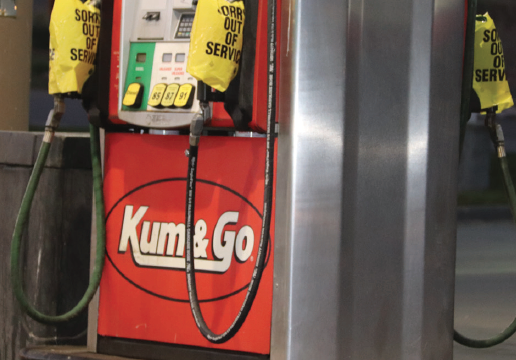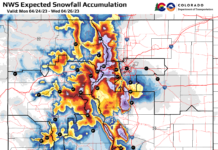by Marissa Lorenz
Motorists attempting to refuel in Kremmling on Tuesday may have been disconcerted and/or put out when not one but two of the town’s three gas stations were without fuel.
Neither the Kremmling Kum-n-Go nor the Kremmling Mercantile could offer fuel products to customers for several hours.
Kum-n-Go Manager Valarie Fuller confirmed that the gas station ran completely out of fuel-unleaded, premium, and diesel-around noon on Tuesday and did not receive a delivery until about 8 o’clock Wednesday morning, leaving the retailer without its primary product for nearly 20 hours.
Fuller observed that recently the station has been running outof fuel a couple of times a week, though this had been the longest period without delivery.
Dave Hammer, who owns the Kremmling Mercantile and the Hot Sulphur Springs Mini Merc with his wife, Karen, reported that the Kremmling location was without gas for about eight hours on Tuesday and the Hot Sulphur Springs store was without gas for about four hours.
Kremmling’s third gas station, the self-serve Grand Fuel Depot, owned by Stuart and Dawna Heller, did not have any fuel shortage on Tuesday. However, the Hellers say that they were without 85 and 87 octane gasoline for over two days just prior to the Fourth of July holiday when a pre-ordered delivery did not show up when planned.
And this last touches on the primary issue to blame for the shortages occurring not just in Kremmling but across the
state and country-a nationwide scarcity of tanker truck drivers.
According to the National Tank Truck Carriers (NTTC), an industry advocate since 1945, between 20% and 25% of tanker trucks are sitting idle this summer, for lack of qualified drivers. Just two years ago, only 10% of the commercial tanker fleet was not in use for the same reason.
“We’ve been dealing with a driver shortage for a while, but the pandemic took that issue and metastasized it,” Ryan Streblow, Executive Vice President of the NTTC, reported earlier this year. “It certainly has grown exponentially.”
COVID-19 related closures meant a large reduction in fuel demand last summer, causing some drivers to retire or find other work. But the industry is also dealing with an aging workforce, increased standards for tanker endorsement certification, and a new federal clearinghouse that makes identifying drug or alcohol violations much easier.
The owners/managers of all three of Kremmling’s fuel stations recognized this growing issue. But there are other contributing factors to the country’s fuel supply woes as well.
“The shortage of truck drivers complicates the existing shortage of refinery workers and a limited pipeline capacity,” explains Hammer. “Also, refineries are frequently breaking down and take time to be repaired.”
And there is the growing risk of attack on America’s fuel supply.
In May, a ransomware attack on the Colonial Pipeline, America’s largest petroleum pipeline system, stretching from Texas to New Jersey, forced a multi-day shutdown. A report from the Departments of Energy and Homeland Security concluded that just three to five days more of the shutdown could have forced the restriction of mass transit and the possible cessation of chemical and refinery operations-because of inability to distribute product.
In Kremmling, some of the shortage may be attributed to an extended influx of traffic over the last few weeks when mudslides
and flash floods have precipitated closures of I-70 in Glenwood Canyon, shifting traffic during some of the busiest travel periods through Kremmling, where many motorists may be needing fuel.
But the fuel supply and driver shortage issues are not anticipated to fix themselves as traffic patterns return to normal. As in many other sectors, a bump in the workforce is critical for continued quality service, and employers, regulators, and educators are going to have to come up with new ways to attract and retain safe, qualified drivers.








